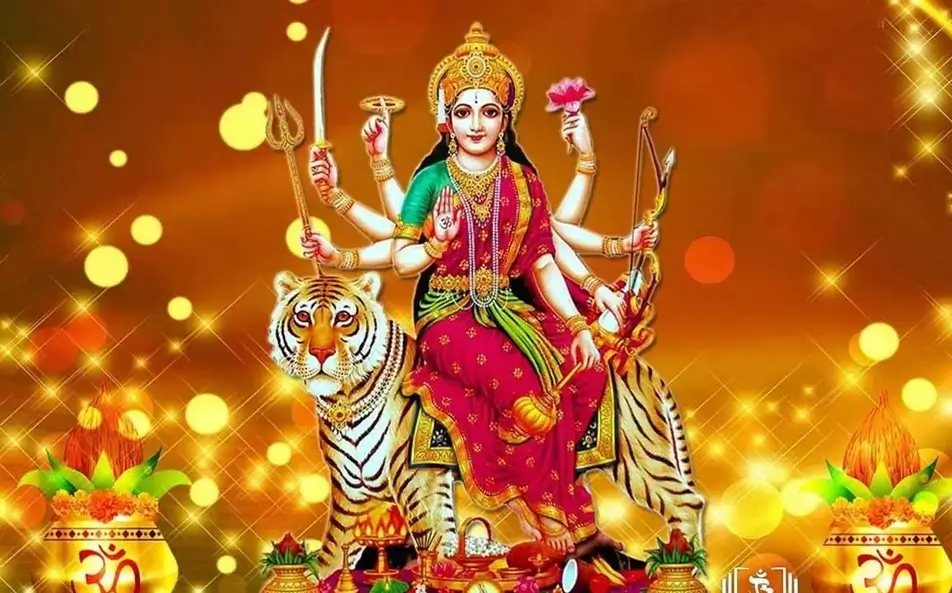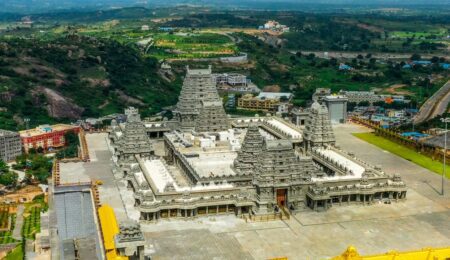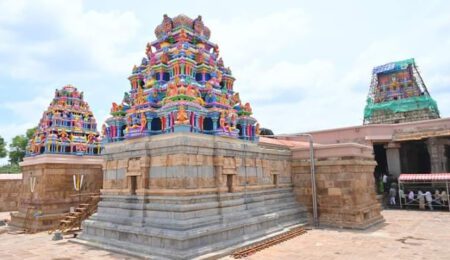Navaratri Festival: A Glorious Celebration of the Divine Feminine
Navaratri Festival
Navaratri festival “nine nights” in Sanskrit is a vibrant and spiritually uplifting Hindu festival dedicated to the worship of Goddess Durga and her nine manifestations (Navadurga). Though it occurs four times a year, the most widely observed form is Sharada Navaratri, celebrated in autumn (usually September–October). Marking the triumph of good over evil, light over darkness, and devotion over ignorance, this festival uniquely blends mythology, regional customs, creative arts, and communal joy.
Mythological Roots
At its core, Navaratri Festival commemorates Goddess Durga’s celestial battle and victorious defeat of the buffalo demon Mahishasura, symbolizing the victory of dharma over adharma. The nine nights represent the Navadurga each form embodying qualities such as strength, valor, purity, wisdom, and spiritual power. The sequence draws from ancient scriptures such as the Devipurana and Devikavaca, underscoring the deep-rooted spiritual significance of each day’s worship.
Historical Context
Navaratri’s origins are ancient, woven into the broader tapestry of Shakta traditions venerating the divine feminine. Over centuries, these celebrations have intertwined with local folklore, royal customs, agrarian cycles, and arts, giving Navaratri Festival its unique polish in each region. For instance, the royal Mysuru Dasara in Karnataka, attributed to King Raja Wodeyar I in the 17th century, showcases the fusion of royal patronage with sacred rituals.
The Nine Forms and Rituals
Each night of Navaratri Festival is dedicated to one of the nine forms of Durga collectively known as Navadurga:
- Shailaputri – Goddess of nature and the daughter of the Himalayas.
- Brahmacharini – Embodiment of austerity and devotion.
- Chandraghanta – The fierce form, symbolizing bravery and courage.
- Kushmanda – Creator of the universe.
- Skandamata – Mother of Lord Kartikeya, the warrior god.
- Katyayani – Born to sage Katyayana, she represents divine anger and justice.
- Kaalratri – Dark and fierce, she destroys ignorance and removes fear.
- Mahagauri – Symbol of purity, peace, and serenity.
- Siddhidatri – The bestower of supernatural powers and wisdom.
Devotees perform daily puja, offering flowers, incense, fruits, and sweets, chanting mantras and hymns to connect with each form. One of the traditional rituals is Ghatasthapana, where a pot symbolizing the goddess is placed at the altar, often filled with water, grains, or a coconut atop mango leaves. On the eighth or ninth day, many observe Kanya Puja, where nine young girls (representing the nine forms) are invited, worshipped, and fed.
Regional Variations: Unity in Diversity
Gujarat & Western India: Garba & Dandiya Raas
In Gujarat, the nights come alive with the folk dances of Garba and Dandiya Raas. Garba is performed in a circular motion around a central diya or idol, symbolizing the eternal energy of the universe. Dandiya, on the other hand, is a rhythmic stick dance symbolizing Durga’s battle with Mahishasura. Participants wear colorful, embroidered chaniya cholis, kediyas, and traditional jewelry, adding to the festive spirit.
West Bengal & East India: Durga Puja
In West Bengal, Navaratri overlaps with the grand celebration of Durga Puja, where intricately sculpted idols of Goddess Durga slaying Mahishasura are installed in themed pandals. The last five days Shashthi to Dashami are filled with rituals, cultural performances, community feasts, and traditional dance forms like Dhunuchi Nritya. On the final day, the idols are immersed in water, symbolizing her return to Mount Kailash.
Tamil Nadu & South India: Golu Festival
In Tamil Nadu, Karnataka, and Andhra Pradesh, families set up Golu a staircase-like display of dolls depicting gods, mythological scenes, animals, and local life. These arrangements are open for guests to view, often accompanied by Carnatic music, Bhajans, and sundal offerings (spiced legumes). Women exchange thamboolam a symbolic gift of turmeric, kumkum, betel leaves, and fruits.
Karnataka: Mysuru Dasara
Mysuru’s Dasara celebration is known for its royal heritage. The Mysore Palace is illuminated with thousands of lights, and a grand procession showcases Goddess Chamundeshwari atop a golden howdah. Cultural programs, fairs, and traditional art performances make it a regal affair.
Andhra Pradesh & Telangana: Bathukamma Festival
Here, Bathukamma is celebrated during Navaratri. Women create beautiful stacks of seasonal flowers arranged in a cone shape, sing traditional songs, and dance around them in unison. The floral stacks are immersed in water bodies on the final day, symbolizing environmental harmony and divine femininity.
Kerala: Saraswati Puja & Vidyarambham
In Kerala, the last three days are devoted to Saraswati Puja, where children place their books and musical instruments before the goddess and refrain from studying. On Vijayadashami, young children participate in Vidyarambham, the symbolic initiation into learning, where they write their first letters under the guidance of elders.
North India: Ramleela and Dussehra
In northern states, Navaratri coincides with Ramleela the theatrical performance of Lord Rama’s life. On Dussehra, huge effigies of Ravana, Kumbhakarna, and Meghnad are burned in public grounds, signifying the victory of good over evil.
Himachal Pradesh: Kullu Dussehra
Unique to Kullu, the Dussehra festival starts after Navaratri. Local deities are brought in palanquins to the Dhalpur Maidan, where cultural events, spiritual discourses, and processions take place for seven days.
Devotional Music and Dance
Music and dance are inseparable from Navaratri. Devotional songs, known as bhajans, are sung in praise of the goddess in various languages. In South India, classical Carnatic and Bharatanatyam performances adorn Golu evenings. In Gujarat, live Garba bands and traditional folk instruments like dhol, tabla, and shehnai set the rhythm. In Bengal, dhaak drummers and Shyama Sangeet elevate the Puja experience.
Fasting and Food Traditions
Fasting during Navaratri Festival is a spiritual discipline observed by millions. The type and intensity of fasting vary, but typically devotees avoid grains, meat, onion, garlic, and alcohol. Common fasting foods include:
- Sabudana Khichdi (tapioca pearls)
- Kuttu ka Atta (buckwheat flour)
- Singhare ke Pakode (water chestnut fritters)
- Samak Rice Pulao
- Aloo Curry
- Fruit Platters and Dry Fruits
- Halwa, Ladoo, and Kheer as offerings
In South India, sundal (boiled legumes with spices) is the most common naivedyam (offering) served daily during Golu. Each dish is symbolic, nourishing both body and soul.
Fashion and Attire
Navaratri is also a time to dress vibrantly. In many regions, each of the nine days is associated with a specific color, and women coordinate their outfits accordingly. Fashion during Navaratri reflects:
- Gujarat: Brightly colored mirror-work chaniya cholis, silver jewelry, turbans, and kediyas.
- West Bengal: Traditional red-bordered white sarees (Laal Paar), gold jewelry, Alta on feet.
- Tamil Nadu: Silk sarees, gold ornaments, jasmine flowers in the hair.
- Maharashtra: Nauvari sarees, Kolhapuri jewelry, crescent bindi.
- Contemporary: Indo-western lehengas, designer dupattas, ethnic crop tops.
Social media challenges and daily dress codes add to the excitement, especially among younger audiences.
Modern-Day Relevance
Despite its deep mythological roots, Navaratri Festival remains highly relevant today for several reasons:
Cultural Preservation
Navaratri helps preserve ancient traditions, languages, and art forms. From Garba steps passed down through generations to the crafting of clay idols and the singing of ancient hymns, the festival keeps Indian culture vibrant and alive.
Community and Togetherness
It brings people together—families gather, neighbors visit, and communities organize dance nights, cultural programs, and food drives. The sense of unity and collective devotion fosters social harmony.
Women Empowerment
Goddess Durga’s many forms celebrate strength, wisdom, motherhood, and fearlessness. Navaratri is increasingly being seen as a symbol of female empowerment, inspiring women to embrace leadership, resilience, and independence.
Economic Boost
The festival season sees increased spending on fashion, travel, jewelry, decor, food, and entertainment—providing a boost to local artisans, vendors, and service providers.
Digital Celebrations
With virtual Golu contests, online Durga Puja live streams, and global Garba nights on Zoom, Navaratri has evolved with the times, allowing global participation and innovation.
Eco-Conscious Practices
Many communities now opt for eco-friendly idols, sustainable decor, and plant-based colors. Initiatives to recycle Golu dolls or use clay over Plaster of Paris for idols are gaining momentum.
Conclusion
Navaratri is not just a religious event—it is a cultural phenomenon that celebrates the divine feminine, artistic expression, and communal joy. Its appeal lies in its diversity—every region, community, and household adds its own touch. Whether through the colorful Garba nights of Gujarat, the grandeur of Durga Puja in Bengal, the artistic Golu of Tamil Nadu, or the royal Dasara of Karnataka, Navaratri reflects the soul of India.
This nine-night festival invites us to awaken the Shakti (divine power) within, to conquer our inner demons, to celebrate life, and to come together in prayer, music, dance, and joy.
Let every beat of the dhol, every diya lit, and every chant of “Jai Mata Di” echo the timeless message: Victory belongs to the virtuous, and the divine feminine resides in all of us.




Leave a Comment